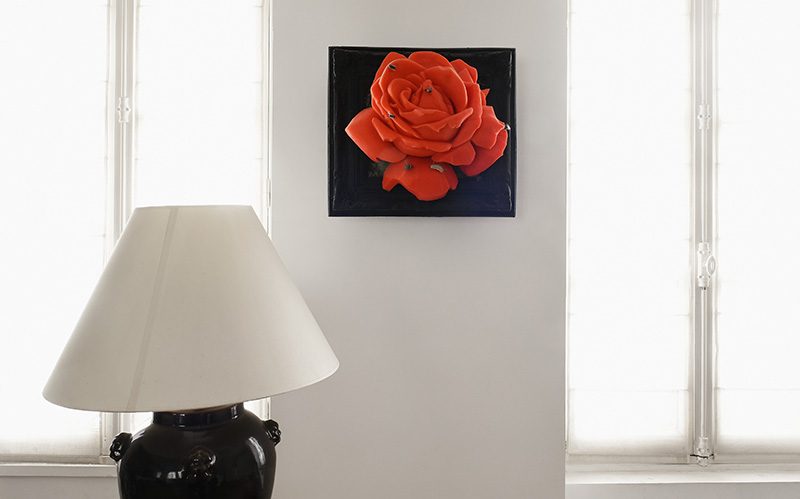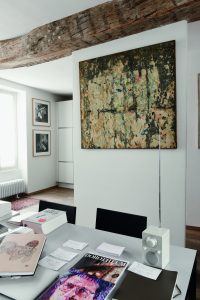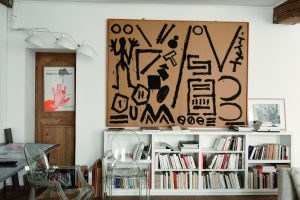
A Matter of the Heart
Arrigo Lessana, relaxed collector, successful surgeon and writer by vocation. Joëlle Thomas, Dorotheum representative in Paris, met the charismatic man in his Paris flat for a conversation about art and the state of the world: a telling encounter with an “amateur de la vie“, as Lessana likes to call himself.

Meret Openheim
As a son to Italian parents who had settled in Paris, Arrigo Lessana dreamt of becoming a boxer. But after he had taken more punches than he had dealt out, he turned to mountaineering, then to the human heart: Lessana became a heart surgeon with heart and soul for his patients. And yet his first book begins with a confession: “As far back as I can remember, I always wanted to give up this profession. I was neither master of my days nor of my nights.” This is the expression of a fleeting weariness often found in passionate people who will not leave “the scene” whatever the cost. The reception he received in 2018 from former Chinese students, now professors themselves, shows how passionately Lessana pursued his profession and how successful he was as a researcher: he revolutionised the surgical treatment of heart valve insufficiency. But his professional achievements lie in the past. “Today I write”, he says. His texts give us a better understanding of Arrigo Lessana’s present and past: he has given up his profession as a medic but has found his place as a writer, knowing that writing is now part of his life.

Lessana’s three novels, all of which were published by Christian Bourgois, provide different reading experiences as they reflect different phases of his life. His debut work “L’Aiguille” (The Needle) describes his career as a doctor and surgeon. “Le sens de l’orientation” (The Sense of Direction) tells the story of the Parisian intellectual, who is equally fond of mountains and women; and “Nos conversations du mercredi” (Our Wednesday Conversations) is about the free afternoons the passionate grandfather spends philosophising about life with his grandson Angelo.
Arrigo Lessana’s flat is bright, as bright as the sunlight, the fire in the fireplace, the sofas of white linen, but especially the pictures attract the eye. They may not radiate any warmth, but they fit perfectly into the room and give us an idea of the life of a collector who concedes that he has always loved the minimalists.

The first work he bought was a zinc plate by Raymond Hains. “I can’t say why I bought it.” Lessana’s collection doesn’t make a ritualised impression; rather it reflects a life of encounters that were anything but insignificant. A deep friendship connects him with Rebecca Horn, for example, as evidenced by a butterfly that, despite its fluttering wings, will never leave its surroundings.
Lessana regards contemporary art to be the “pulse and mirror of the present. It is a portrayal of its time emanating from fantasy, but at the same time a fantasy that becomes a reality because it brings out the essence of an epoch and points beyond it.” One has to probe to discover the stories that connect Lessana to his works. It turns out, for instance, that the vase holding a withered flower comes from Meret Oppenheim, and that, for him, the familiar sight of it resembles an old friend whom one pretends to ignore but who is in fact, indispensable.

Photographs by Malick Sidibé depicting dancers from the Ivory Coast hang alongside a work by Jeanne
Silverthorne depicting a bright flower belaboured by a bee (“O Rose”). Two oil paintings on cardboard by A.R. Penck that border drawings by Richard Tuttle and a sketch of “King Lear” by Gilles Aillaud try to attract attention. However, they all fail to achieve the impact of the collector’s favourite work: a photo by Richard Ballard showing Lessana with his grandson Angelo. There is, also from Ballard, a huge, magically attractive picture of a tree that opens like a door to the fabled Brocéliande forest, promising a reunion with the fairies Viviane and Morgane. Above the desk hangs a photograph by Gordon Matta-Clark. Arrigo Lessana takes a look at it before returning to his writing: apparently his fourth novel is in the making.
Cover: „O Rose“ by Jeanne Silverthorme / Photographs by Malick Sidibé











